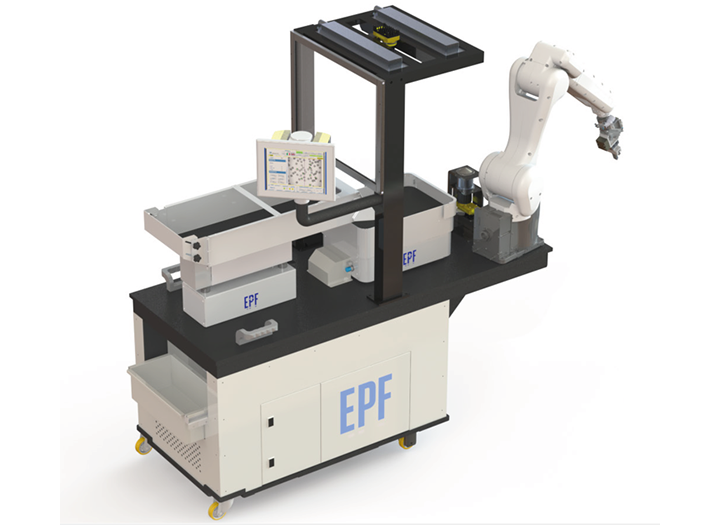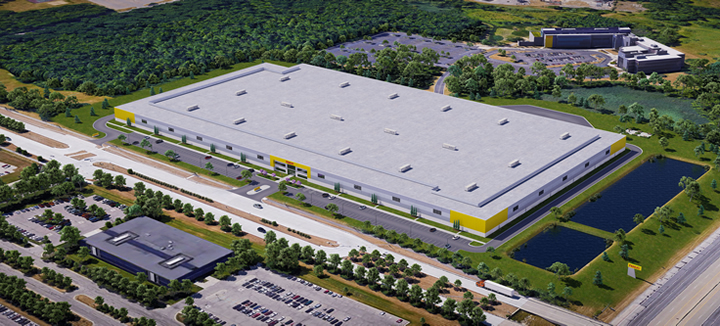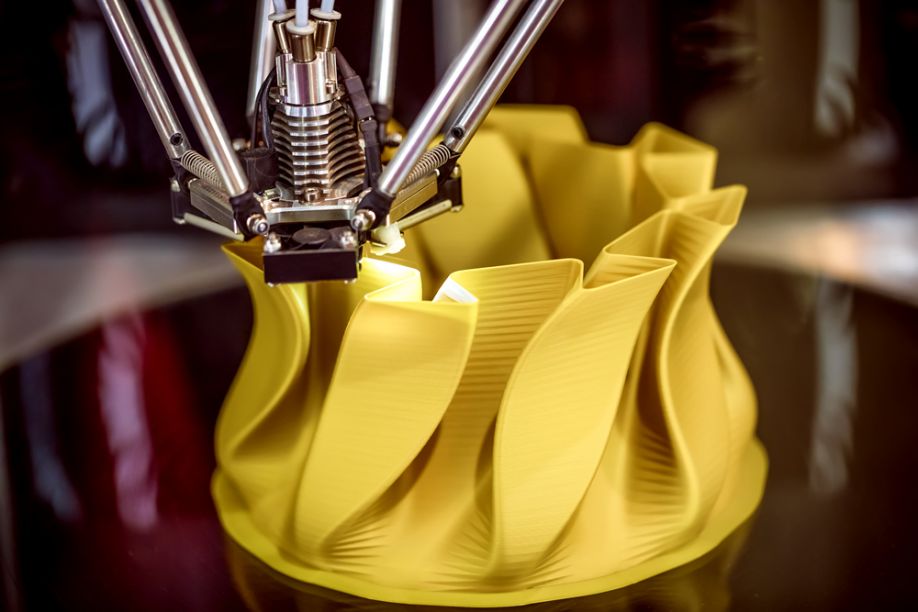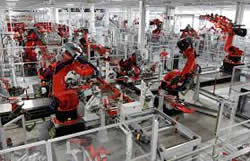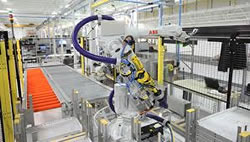Flexible feeding for a smarter production line
Vibratory feeders are used to align and feed small products and parts during the assembly and production process using gravity and vibrations. They are a common element of many operations and an effective way of automating production lines.
FANUC America Nearly Doubles Michigan Campus to Accommodate Automation Demand
The global automation solutions leader invests in US manufacturing with plans of a second expansion in three years to meet growing need
Variance and Volume Advantageously Combined One of a Kind in Series
Up until now, users in the metal and plastics processing industries often faced a difficult choice: with CNC lathes and milling machines, one opted either for the largest possible variance or for large volumes, i.e., high quantities.
How Are Smarter Robots Leading to Mass Customization in Manufacturing?
Although consumers eagerly purchase products made through mass customization, they want those items quickly. That need for speed is one of the main reasons why manufacturers often use robots to achieve the consistent pace required to fill orders efficiently and without errors.
Warehouses Turn to Automation to Meet Permanent Peak Demand
Supply chains are relying on automation to effectively adapt to fluctuating demand levels, new safety protocols, and shrinking labor pools. The need to operate efficiently, safely, and productively with less people is critical for today and also for success in the future.
Innovative Manufacturing Approach Reduces Costs and Optimizes Electrification Time to Market
Manufacturers looking to enter or expand their electrification business often find themselves balancing key production requirements with the unpredictability of an emerging market where best-practice standards are still evolving.
The industrial robotics market will nearly triple in less than 10 years
April Glaser for RECODE: Collaborative robots are expected to account for a third of that market.
Factory Automation Will Speed Forward with A.I., Says Bernstein
By Tiernan Ray for Barron's: Bernstein Research’s Alberto Moel, who follows tech-industrial companies such as Corning(GLW) and AU Optronics (AUO), this afternoon offered up a thinks piece on robotics andfactory automation, arguing that some of the costs of automation beyond the basic cost of the robot are about to get dramatically cheaper, thanks in large part to artificial intelligence akin to what Alphabet (GOOGL) and others are doing.
Moel notes that the basic components of factory robots are only falling by perhaps 6% per year, their cost reduction bounded by things such as casings and servomotors and reduction gears that don’t rapidly fall in cost.
But, writes Moel, the cost to install and adjust these machines on a factory floor is ten times their component cost and that stuff can be reduced more dramatically:
How much this integration costs varies widely. An often-cited rule of thumb is that a $50,000 robot will need $500,000 of integration costs before it is all said and done. Of course, these integration costs can be amortized over many robots, so perhaps a better estimate would be 3-5x the robot cost [...] But I do believe we are at an inflection pointthat will materially increase the capability of automation systems and substantially reduce programming, setup, and fixturing costs which are the largest cost element in most automation efforts. So instead of a measly 6% YoY cost reduction , we get 25-30% YoY declines, and automation Nirvana. Cont'd.. .
Robotics, reshoring, and American jobs
By Charles Orlowek for The Hill: Good news? Boston Consulting Group foresees more large manufacturers boosting production for the American market by adding capacity in the U.S. itself, compared with any other country. It cites “decreasing costs and improved capabilities of advanced manufacturing technologies such as robotics." Under this optimistic scenario, how much value would American workers add? When robotics and other automation gets built for, and installed in American workplaces, where are jobs created?
Increasingly, these jobs are being created and sustained outside the United States, even for domestic factories.
The first industrial robots were developed and manufactured by Americans, and General Motors became the first user, in 1961. Over recent decades, however, the domestic robot industry has declined. A Commerce Department national security assessment from 1991 asserted that American robot manufacturers lost market share throughout the 1980s, with shipments of U.S.-manufactured robots falling by 33 percent between 1984 and 1989, despite robust domestic demand and a weak dollar. Cont'd...
Reduce product droppage and lower scrap rates
Piab DURAFLEX friction cups provide firm grip on slippery materials
Ross Controls Announces New and Improved Pneumatic Counterbalance
ROSS Controls, Troy MI, introduces a new and improved 1-1/4" pneumatic automatic counterbalance for large mechanical stamping presses.
Foxconn Seeks Manufacturing Sites in India
SEAN MCLAIN for WSJ.com: Foxconn became the latest global giant to declare its intention to tap into India’s budding manufacturing potential.
The company is looking for manufacturing sites in India. So far it hasn’t been able to settle on any in particular, Foxconn Chairman Terry Gou told a news conference in New Delhi.
“India is a big, big country. Too many places, too many states, too many cities. The choice is difficult,” he said.
Foxconn is the world’s largest contract electronics manufacturer by revenue. The Taiwanese company—known officially as Hon Hai Precision Industry Co.—is looking to tap India’s massive labor pool and has big ambitions for its Indian investments. It has long-term plans for Asia’s third-largest economy and hopes to do more in India than simply assemble smartphones and laptops. “We want to bring the whole supply chain here,” Mr. Gou said.
Analysts say Foxconn is looking to diversify its global network of factories as the company faces more competition and rising wages in China, where it has most of its manufacturing operations. Cont'd...
Belimed Announces Washer/Disinfector Compatibility with Latest Automated Robotic Cleaning Process
Belimed announced today that their WD 290 washer/disinfector, together with a new specialty robotic rack has been confirmed acceptable for use in the Automated cleaning process for Intuitive Surgical's EndoWrist surgical instruments designed for use with the da Vinci Xi Surgical System.
Güdel and ATI Industrial Automation Announce New Coupling Technology for 3-axis Press Transfer System
With several die changes a day, a system of removable rails with ATI couplers results in more uptime for Tier 1 automotive supplier.
Festo Showcases Innovation Integrated Solutions for Semiconductor and Solar Energy OEMs at Semicon West 2015
Safety, clean room, process control, and handling and gripping are among the integrated systems featured. The company is also displaying a number of new products, including the SBSI low cost, versatile, vision sensor. (Festo Semicon West Booth # 1129)
Records 1 to 15 of 99
Featured Product

Elmo Motion Control - The Platinum Line, a new era in servo control
Significantly enhanced servo performance, higher EtherCAT networking precision, richer servo operation capabilities, more feedback options, and certified smart Functional Safety. Elmo's industry-leading Platinum line of servo drives provides faster and more enhanced servo performance with wider bandwidth, higher resolutions, and advanced control for better results. Platinum drives offer precise EtherCAT networking, faster cycling, high synchronization, negligible jitters, and near-zero latency. They are fully synchronized to the servo loops and feature-rich feedback support, up to three feedbacks simultaneously (with two absolute encoders working simultaneously). The Platinum Line includes one of the world's smallest Functional Safety, and FSoE-certified servo drives with unique SIL capabilities.

